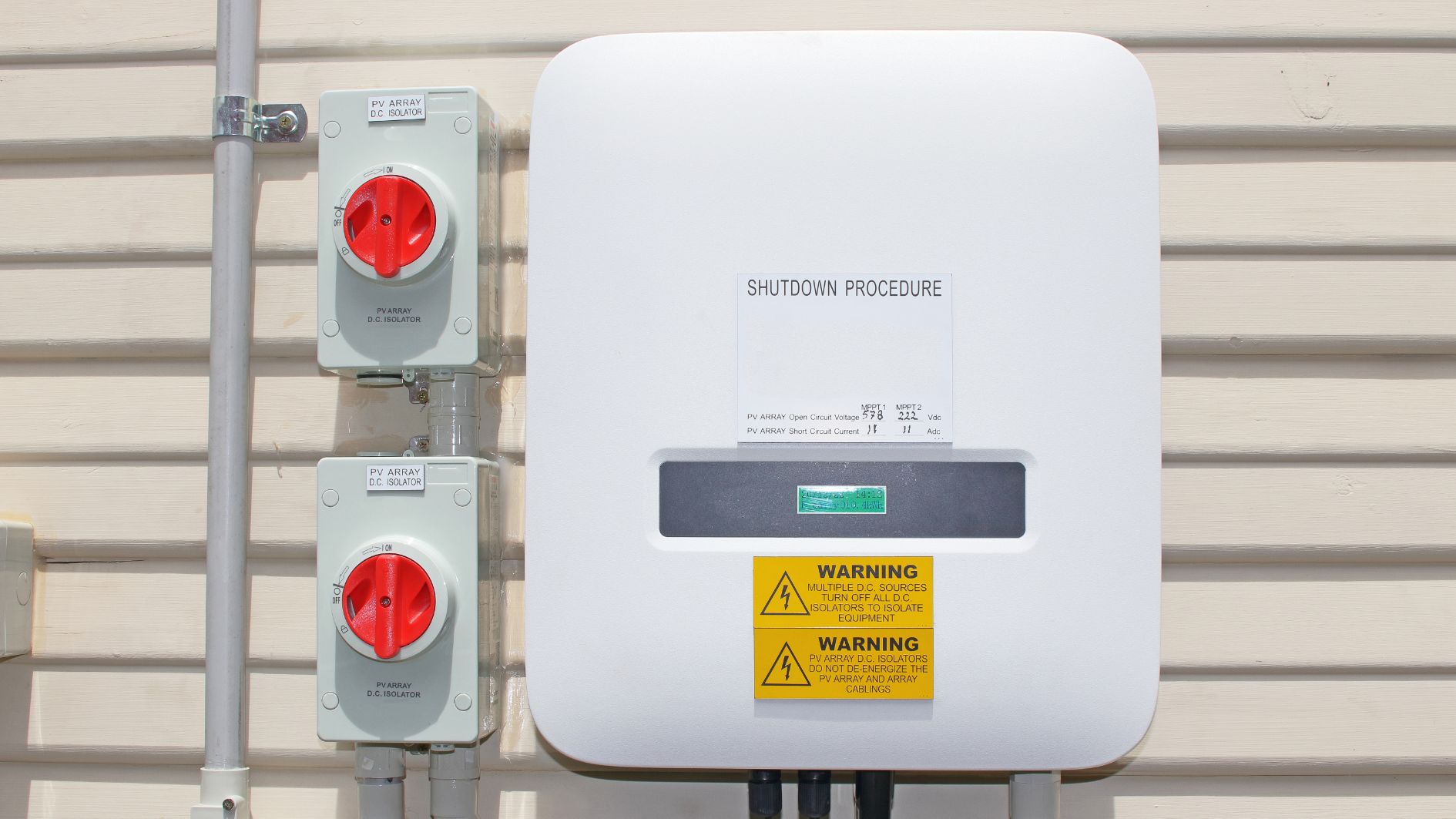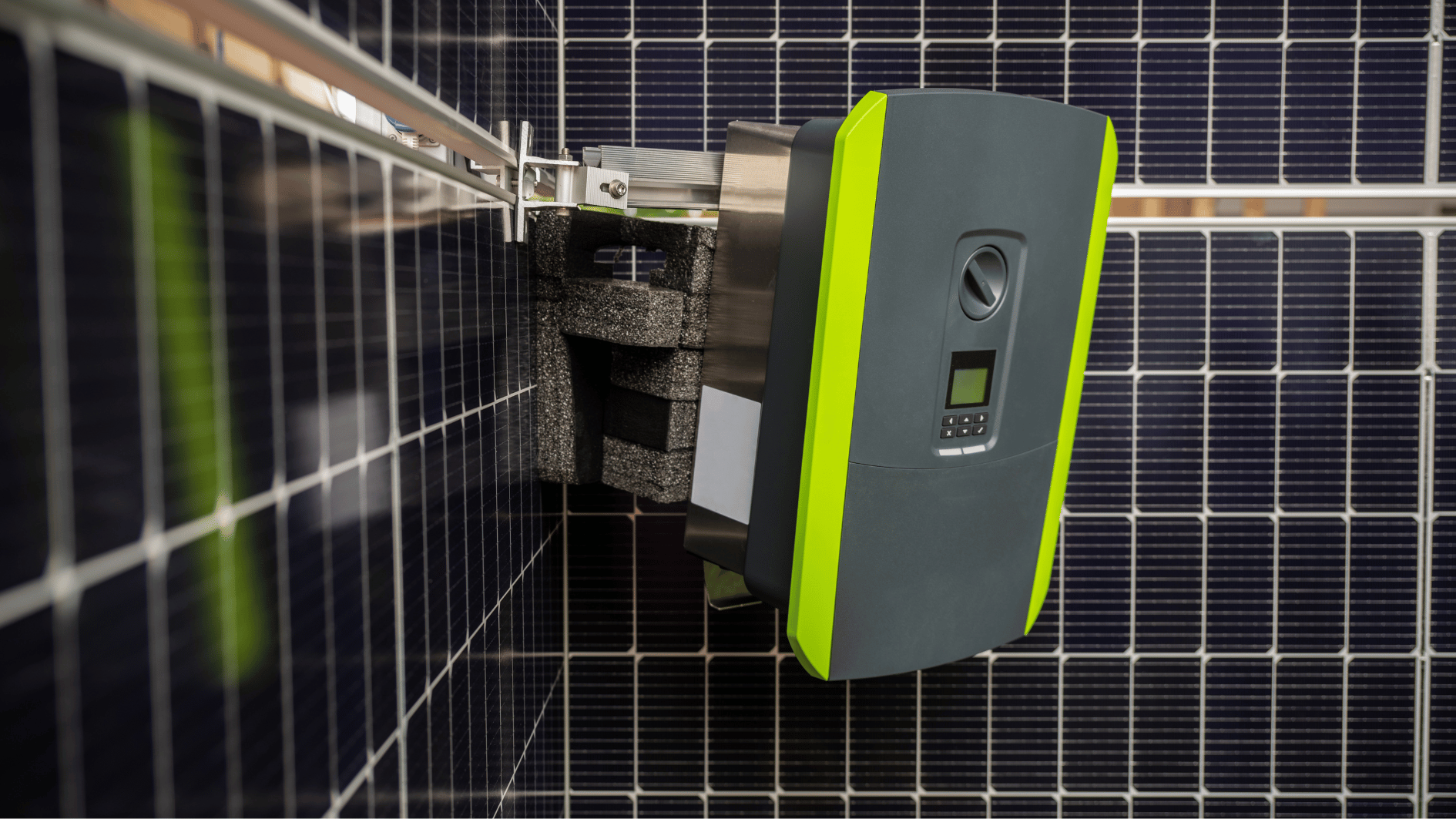Image source: Canva.com
Inverters are critical components of solar power systems, responsible for converting the direct current (DC) electricity produced by solar panels into alternating current (AC) electricity used by household appliances and the grid. Inverter efficiency plays a major role in determining the overall performance of a solar energy system. This article explores the concept of inverter efficiency, its impact on solar energy output, and ways to maximize the efficiency of inverters to ensure optimal solar system performance.

Solar Inverter 101: Everything You Need to Know
Understanding Inverter Efficiency
Inverter efficiency refers to the ratio of usable AC electricity produced by the inverter to the DC electricity input it receives from the solar panels. For example, if an inverter receives 1000 watts (W) of DC power and produces 950 W of AC power, its efficiency is 95%. The higher the inverter efficiency, the less energy is lost during the conversion process, maximizing the energy output from your solar system.
Types of Inverter Efficiency

Peak Efficiency
This is the highest efficiency level an inverter can achieve, usually under ideal conditions and specific loads. However, peak efficiency is typically a maximum point and may not be sustainable over a range of operating conditions.

CEC Efficiency
The California Energy Commission (CEC) efficiency rating is a standardized measurement often used in the U.S. It provides a similar weighted efficiency score to the European standard but is based on a different set of testing protocols. The CEC rating is especially useful in areas where regulations require it for solar installations.

European Efficiency
This is a weighted measure of an inverter’s efficiency over a range of power levels. It takes into account that most systems do not operate at full capacity all the time due to weather changes and other factors. European efficiency is often a better real-world indicator of an inverter’s performance than peak efficiency alone.
Factors Affecting Inverter Efficiency
Temperature
Inverters generate heat as they operate, and efficiency can drop as temperature rises. Most inverters are designed to operate within a specified temperature range, but overheating can still cause inefficiencies. Ensuring good airflow around the inverter and protecting it from direct sunlight can help maintain high efficiency.
Load Level
Inverters are generally most efficient when operating close to their rated capacity. If an inverter is consistently under-loaded (e.g., when solar panel output is low), its efficiency may drop. Likewise, overloading an inverter may trigger power losses and even system shutdowns.
Design and Quality
The design, components, and quality of an inverter impact its efficiency. Higher-quality inverters often incorporate advanced materials and technologies, such as maximum power point tracking (MPPT), which adjusts the inverter’s operation to maximize the output from solar panels under varying light conditions.
Type of Inverter
Different types of inverters offer varying efficiencies:
- String Inverters: Common in smaller systems, these are cost-effective but may suffer efficiency losses if one panel is shaded, as the inverter cannot isolate individual panels.
- Microinverters: These attach directly to each solar panel, allowing individual optimization and making them ideal for complex or shaded roofs. While more expensive, they can offer higher overall system efficiency.
- Power Optimizers: Similar to microinverters, these maximize panel output and then send optimized DC power to a central inverter, balancing cost and efficiency.
How to Maximize Inverter Efficiency
Choose the Right Inverter for Your System
Selecting an inverter that matches the size and design of your solar array is critical. Over-sized inverters can lead to energy waste, while under-sized inverters may struggle to handle peak loads. Ask a solar professional to choose the right type and size for your energy needs and system configuration.
Optimize System Layout
Shading can significantly affect inverter efficiency, particularly in string inverters. When designing your solar system layout, ensure that panels are placed in areas with minimal shading. In cases where shading is unavoidable, microinverters or power optimizers may provide a better solution to avoid energy losses.
Maintain Proper Ventilation and Cooling
Inverter performance can degrade when temperatures are high. Installing inverters in a cool, well-ventilated space helps to prevent overheating. Some inverters come with built-in fans or heat sinks to regulate temperature. Ensure that any cooling mechanism is unobstructed and free of dust buildup to maintain consistent performance.
Regularly Monitor and Maintain Your Inverter
Regular monitoring of inverter performance allows you to identify and address any efficiency issues promptly. Many inverters come with monitoring software or apps that provide real-time data on power output and efficiency levels. Cleaning dust or debris, inspecting connections, and conducting periodic checks can help maintain optimal inverter performance.
Utilize Maximum Power Point Tracking (MPPT)
Most modern inverters feature MPPT technology, which dynamically adjusts the inverter’s settings to capture the maximum amount of power from the solar panels as conditions change throughout the day. Using an inverter with MPPT is highly beneficial for maximizing efficiency, especially in areas where sunlight conditions fluctuate frequently.
Invest in Quality Equipment
While cost is a factor in choosing an inverter, investing in a high-quality inverter can pay off over time in terms of efficiency and durability. Look for inverters with a high CEC efficiency rating, as they can offer better long-term performance and reliability.
Key Takeaways for Maximizing Solar Energy Output with Efficient Inverters
- Understand your efficiency needs: Choose an inverter with the right efficiency profile for your environment and power needs.
- Reduce energy loss: Design your system layout to minimize shading and maintain optimal conditions for inverter operation.
- Monitor performance: Use monitoring tools to track efficiency and make adjustments when needed.
- Maintain proper cooling: Keep your inverter in a cool, shaded, and ventilated area to prevent overheating.
- Leverage MPPT: Opt for inverters with MPPT technology to make the most of variable sunlight conditions.

Inverter efficiency is central to achieving high output from your solar energy system. By understanding how inverter efficiency works and maximizing it, you can improve your system’s overall energy yield, reduce wastage, and make your solar investment even more cost-effective. Remember, each small improvement in efficiency contributes to greater energy savings and a more sustainable energy solution in the long run.





